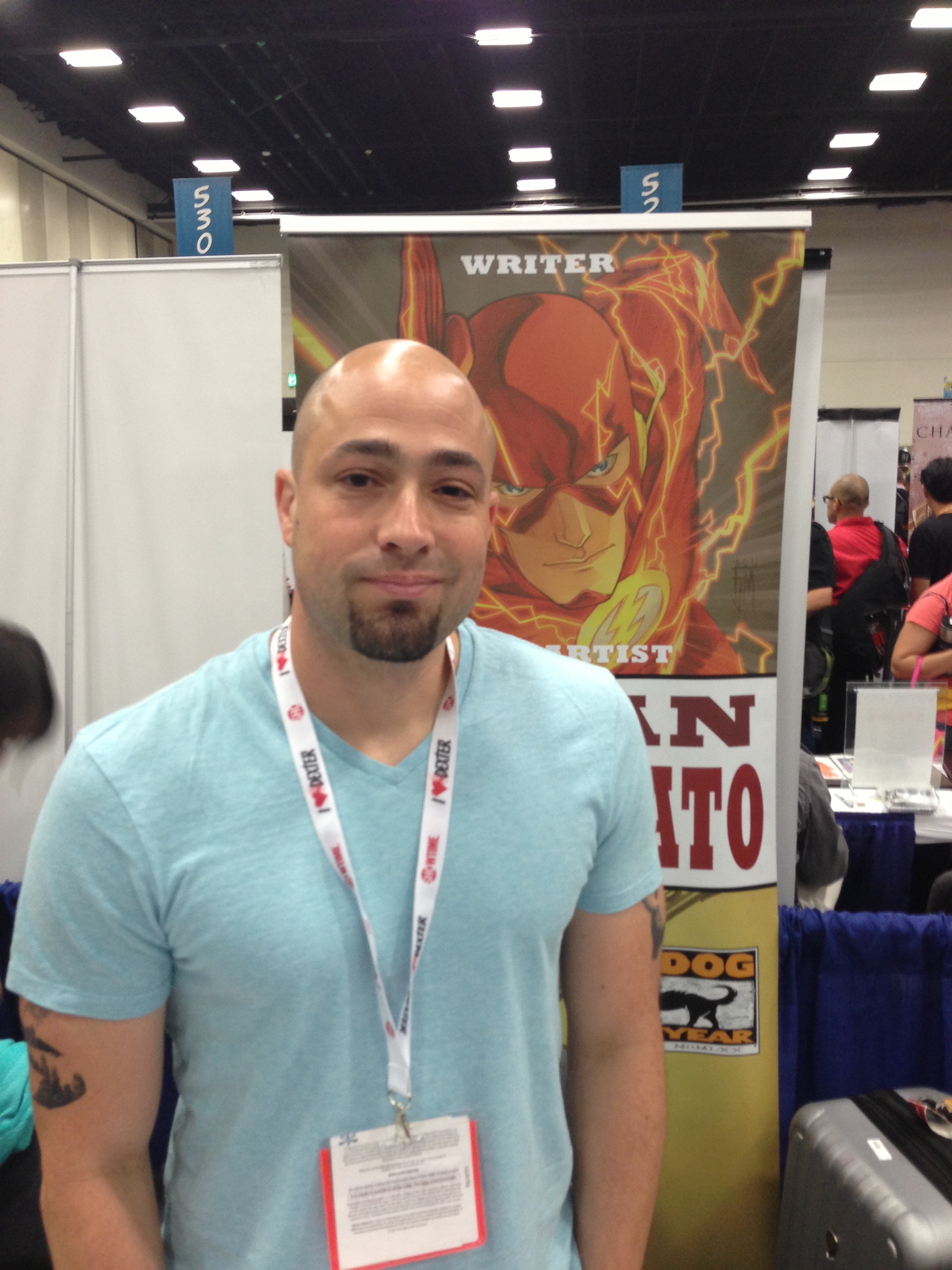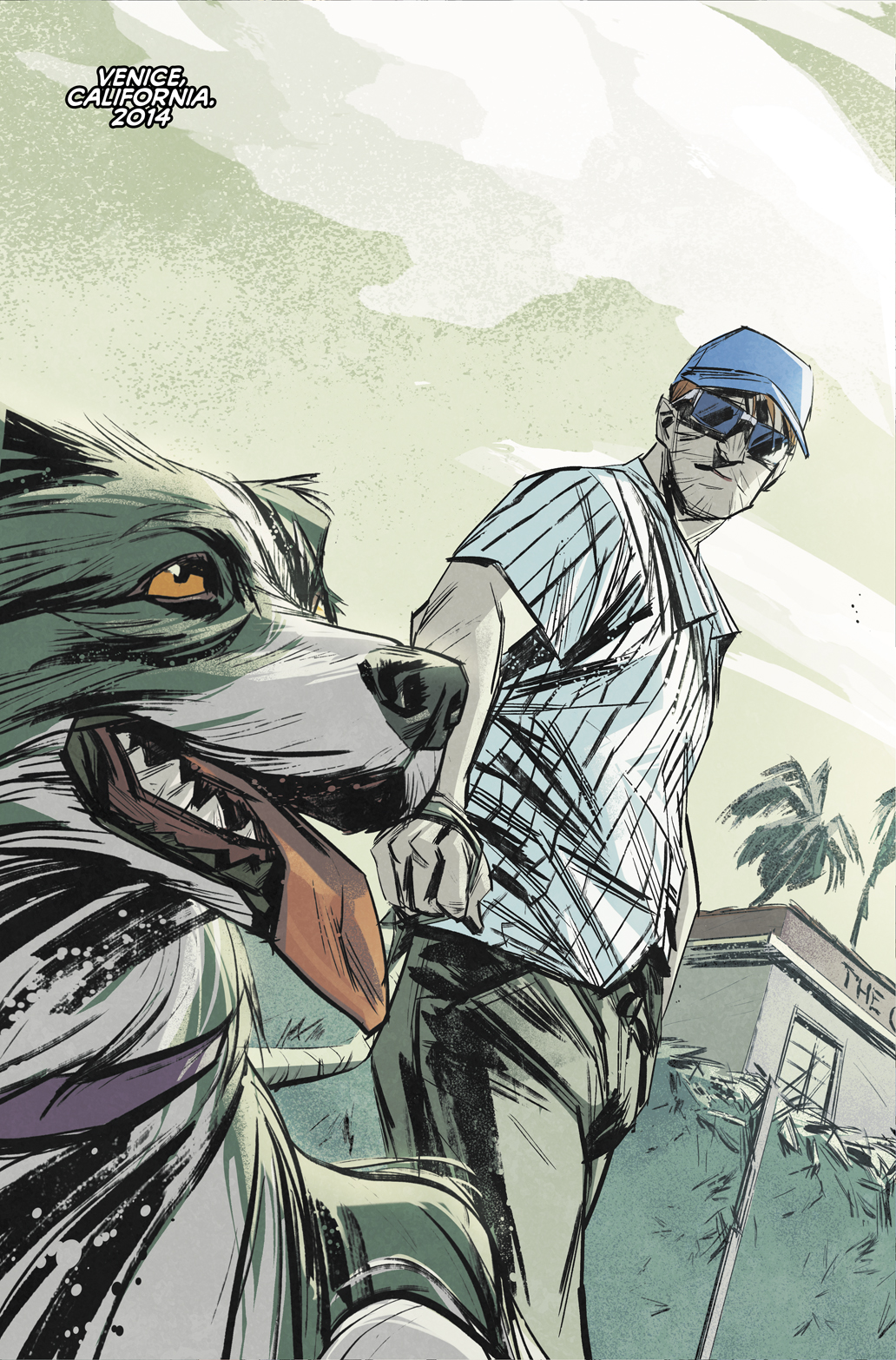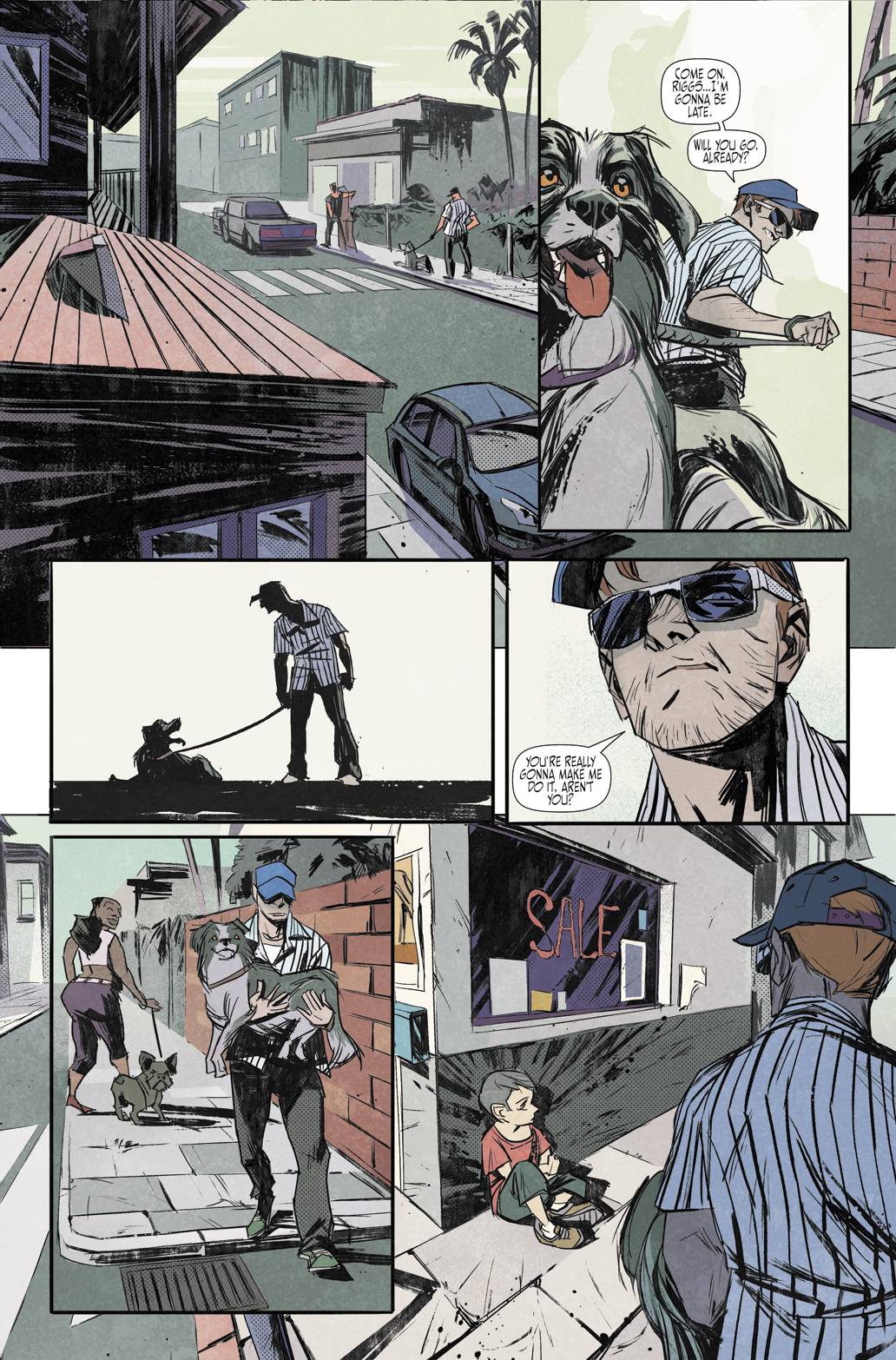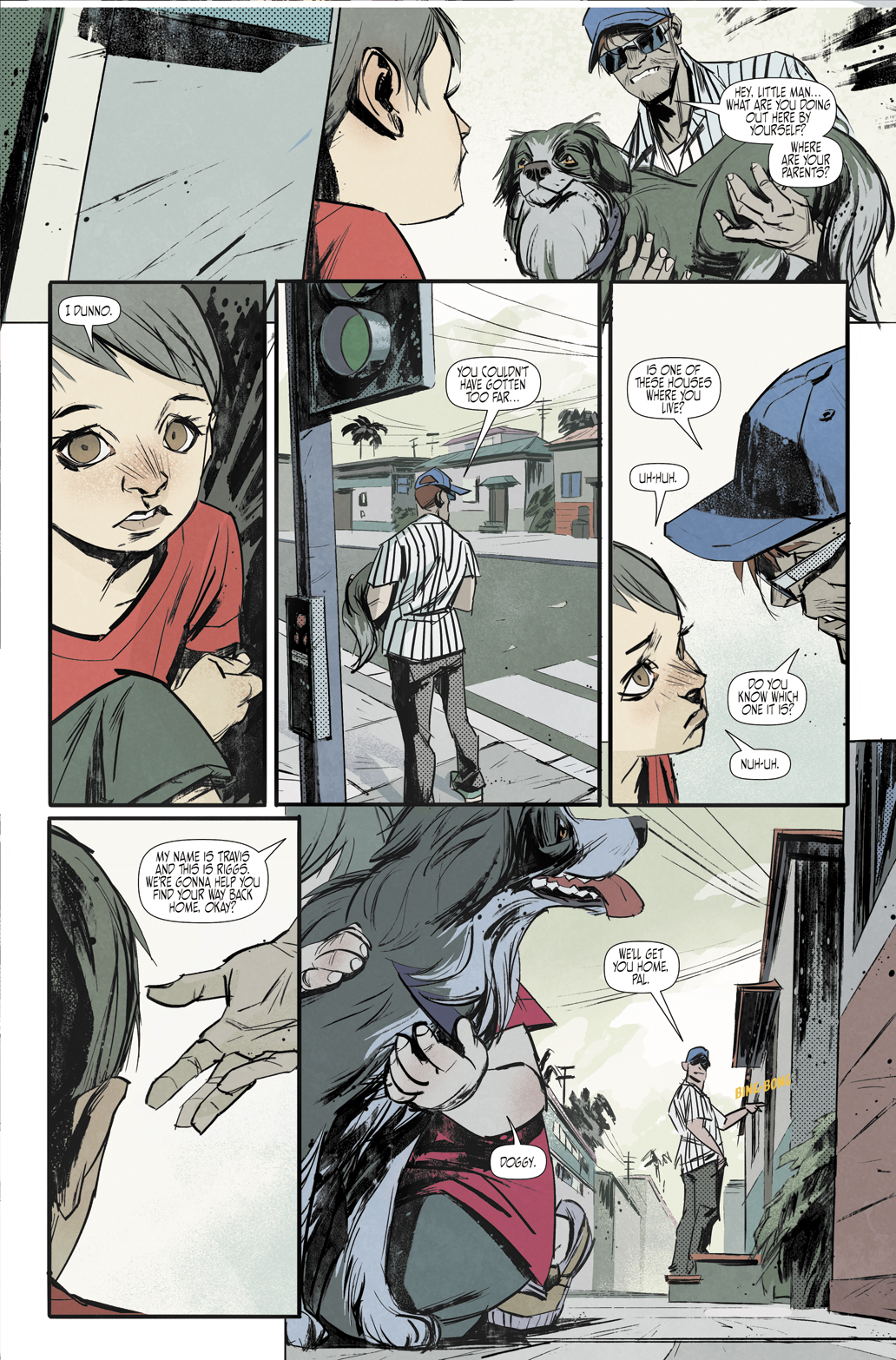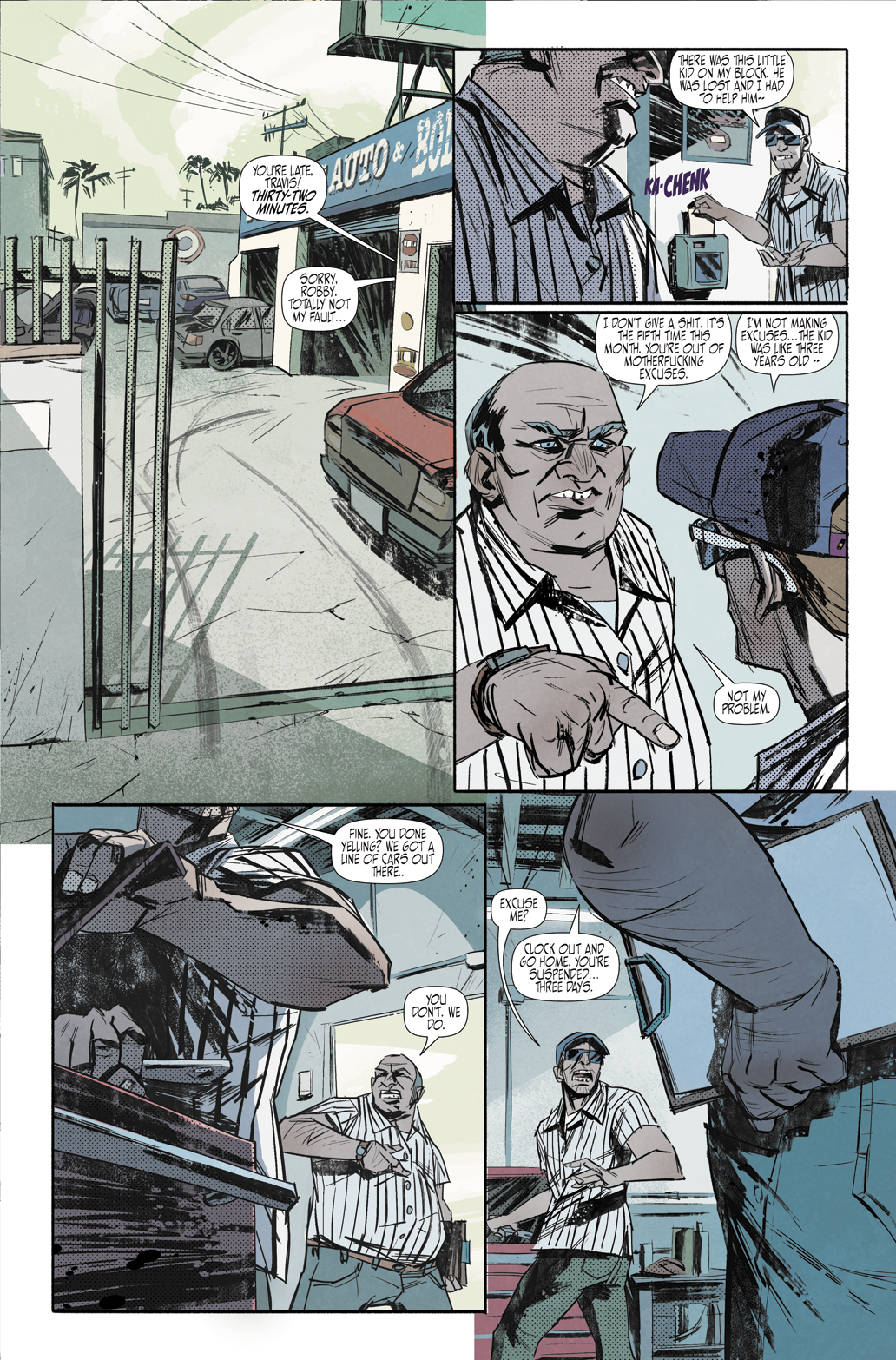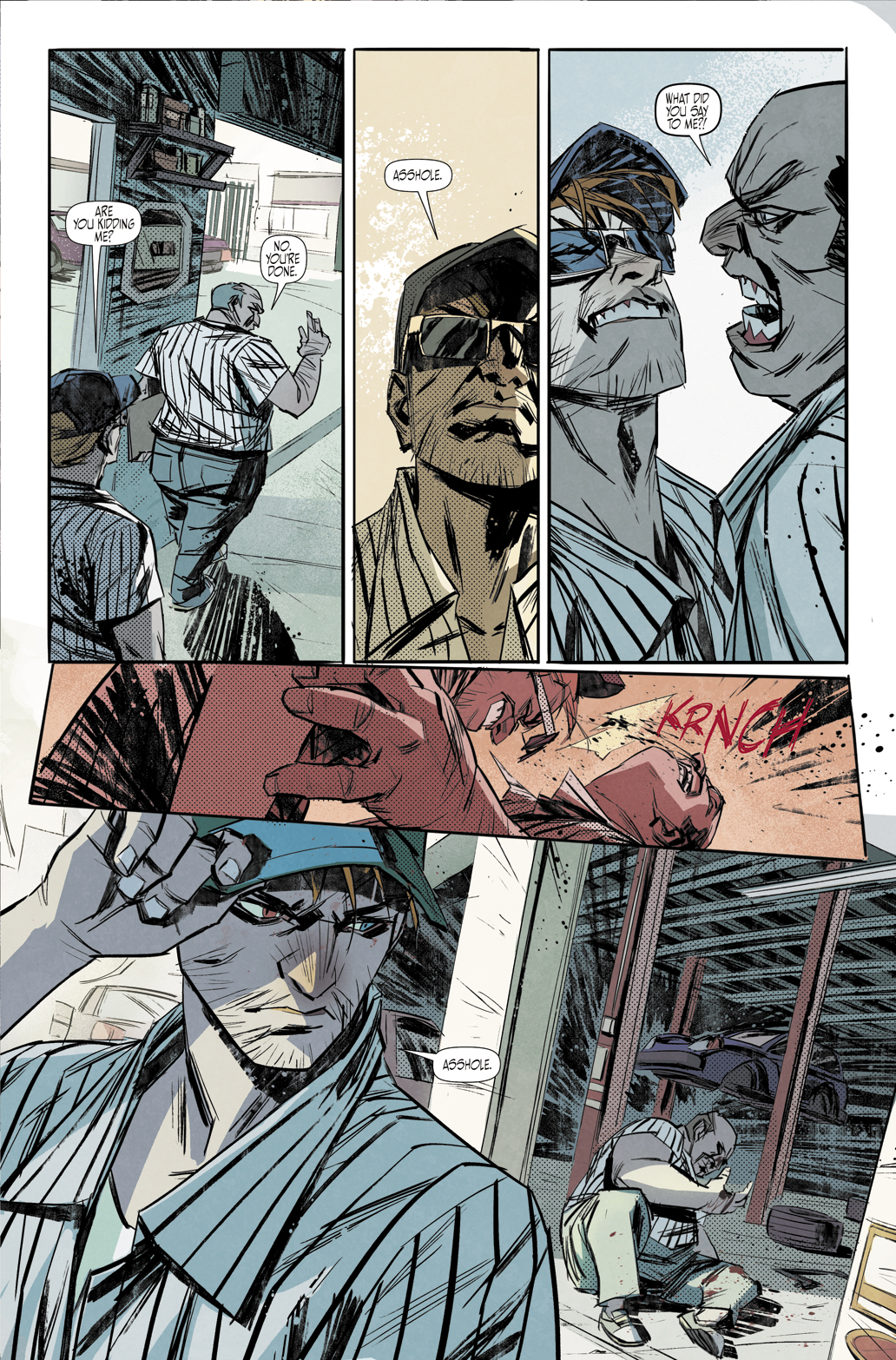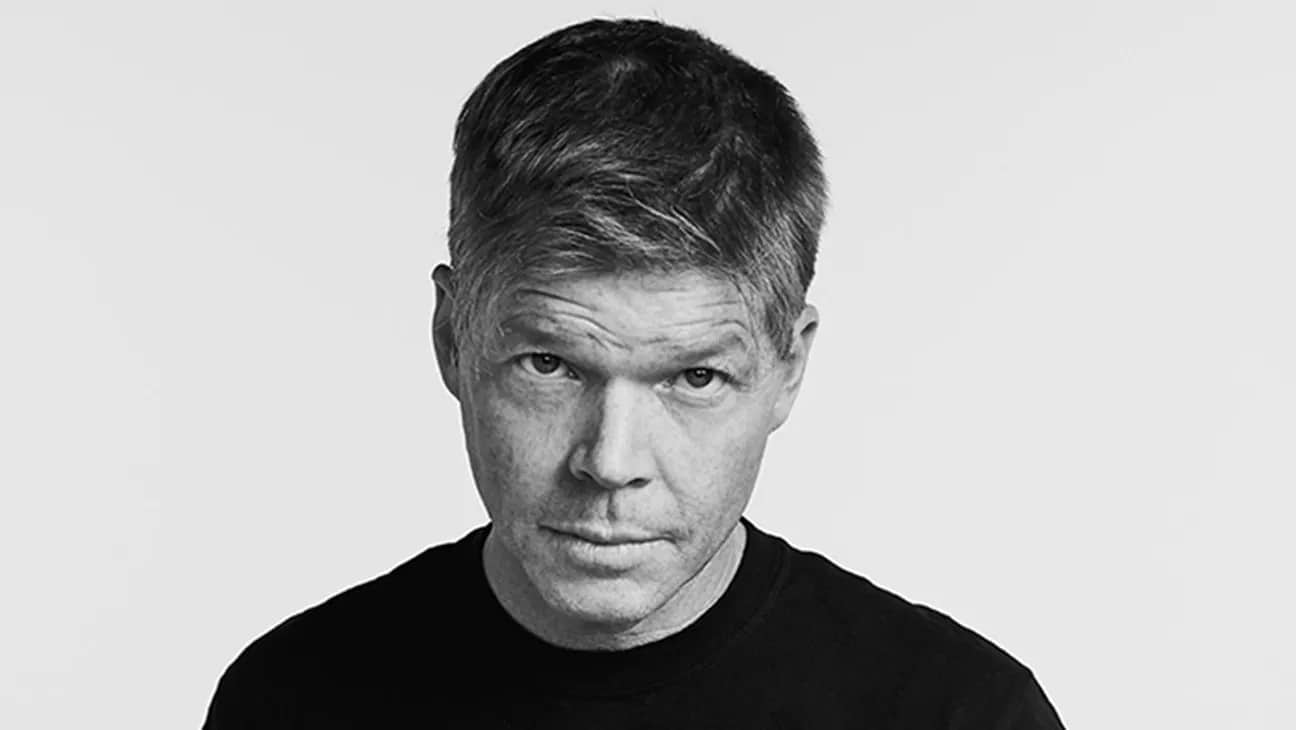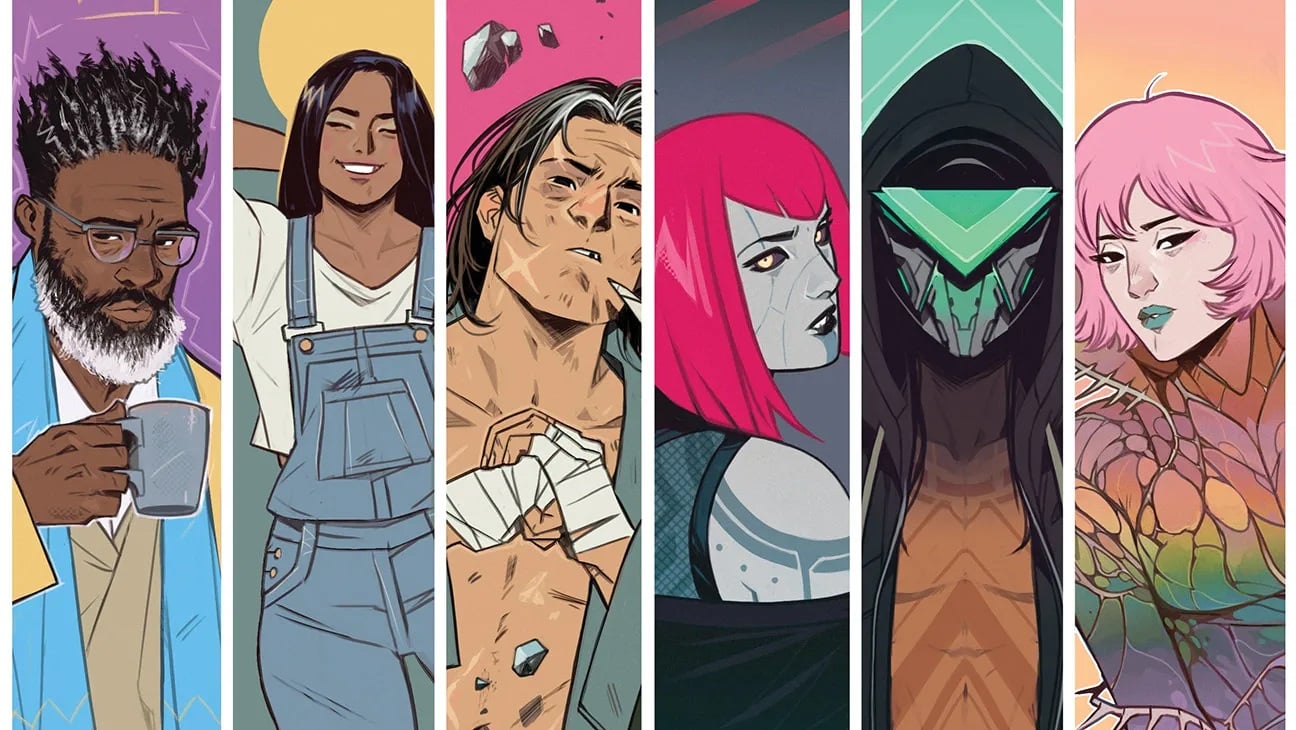Welcome to MATT CHATS, where I (Matt) talk to a person of interest in the comic book industry every Tuesday at 4:30 PM Eastern. Today I am speaking with an industry veteran but relative necomer to the Image renaissance. When Brian Buccelleto offered the first two issues of his upcoming Image series Sons of the Devil (also a short film) to reviewers on a recent episode of the Word Balloon podcast, I jumped at the chance to read them and talk to him. As a fan of his collaborations with Francis Manapul on The Flash and Detective Comics, I was not disappointed, more than happy to discuss with Brian the differences between something on the screen and on the page, the effect crowdfunding has on financials and other aspects of the creative process.
Did you talk with Kyle Higgins about the process of bringing something from the screen to the comic book page?
He’s a really close friend of mine and so we talk about everything – including the process of filmmaking and comic books. That said, he helped me out a lot on the film. Shout out to Kyle!
How are your philosophies similar?
We love film and comics and want to do both. So I think everything we create is done with the hope of being able to tell the stories in both mediums.
What do you think are the pros and cons of doing a film simultaneously with a comic, as opposed to adapting a film years later like Higgins did?
I think the biggest pro for doing it simultaneously is that you can actually SEE the story come to life on screen, which informs what you do in the comic AS you are doing it. Having actors take your material, interpret it, and make it their own helps you see the characters in new and interesting ways. Also, in the case of Sons of the Devil, we were able to secure interesting locations and have visual reference that I then gave Toni in the script. I think there was a certain level of synergy with doing both comic and film together. For Kyle and C.O.W.L./The League, I think adapting it later allowed him distance to cherry pick the best elements of his short. Honestly, I don’t know if there is a downside to either. Making comics and films are each awesome experiences… getting to do BOTH is off the charts awesome.
What are some storytelling benefits of telling a story both on the comic page and on the screen?
I think the two mediums are similar but have their own inherent advantages in how the story is told. Film is a forward-moving visual medium where you experience the story with sight and sound. There is a momentum to films that you want to sustain because you HOPEFULLY have the viewer’s undivided attention and you want to keep it. It’s more of a sensory experience for the viewer. Comics are also visual, but are experienced at a pace dictated by the reader. There is no captive audience. In some ways that’s a disadvantage… but the benefit of a comic is that a reader can spend as much time on a single page as he/she wants. And the reader can go back and re-read and really digest the material without it hurting the experience.
What kind of audience did the Kickstarter attract? Was it more composed of fans of films or comics?
It was mostly comprised of fans of my work, who were intrigued by my transmedia concept.
Does the fact that the comic was funded through a Kickstarter campaign change the financials of the series at all? Because of the Kickstarter, for example, is the sales threshold lower?
II I don’t think being a Kickstarter project has any bearing on sales thresholds. In the case of SOTD, almost all of the funds we got went into the budget of the short film – which ended up costing more than what we got from Kickstarter. So financially speaking, the Kickstarter didn’t pay for the ongoing series. I had to get financial support from other means. But Kickstarter allowed me to start the comic book and get far enough down the road to pitch it to Image. This allowed me to take the concept from its initial plan as a one-shot to becoming an ongoing series.
Kickstarter is as much about marketing tool nowadays as it is a way to amass funds. How big of an impact do you think the campaign has had on the visibility of the work?
Honestly, I don’t know how directly Kickstarter will factor into the marketing of the book. I had approximately 250 backers, so I don’t think that number will significantly impact the sales number for issue 1.
For any artists looking to be discovered, can you describe how you searched for an artist for Sons of the Devil?
I feel VERY lucky. I was searching an international portfolio website called Behance when I came across Toni Infante’s work. I also tried DeviantArt and inquired using social media.
What were some of the challenges of working with a less experienced artist?
Honestly, I don’t look at his art or our lack of American comic credits and think “less experienced.” He is a professional artist with an amazing skillset, and I haven’t had any challenges that you might associate with a new artist.
Were there any benefits?
Only that I get the honor of working with him.
Was it hard letting go of the coloring duties for Sons of the Devil?
Not really. I’ve been coloring for 20 years and have had my fill. Of course, him showing me great coloring samples helped to make the decision easy.
You’re perhaps best known in the comics scene for your collaborations with Francis Manapul. Has it been difficult in any ways to be seen as a writer in your own right?
Not really. I made the decision to do my own solo stuff very early on, so that I could carve out my own identity as a writer. I self-published a book called Foster early on in our Flash run and did a 12-issue Black Bat story for Dynamite. I think it took a little more time for me to build trust within DC editorial so that they saw me as an individual in collaboration with Francis and not just the guy that he brought in to help. But to their credit, they have been very supportive of me and have allowed me amazing opportunities to shine on my own with Rogues Rebellion, Injustice and a few solo arcs on Flash. Oddly enough, I think Francis has had a tougher time being seen as a writer because he is such an amazing artist that it overshadowed his own writing chops. But he IS a writer/storyteller and has future plans to do his own solo stuff.
What are your hopes for Sons of the Devil professionally, creatively and personally?
Personally and creatively, I am always trying to grow as a writer and tell personal stories that resonate. So my hope is that each project I do is better than the last. Professionally, I would love for SOTD to be an ongoing series AND a television series.
Do you think the amount of great output from Image Comics good for business, or does it make it harder for your book to stand out?
I think there is always room for good books from every corner of publishing. The Image brand is obviously something any creator would want to be associated with. The amount of quality content that Image puts out means that retailers and fans will be more likely to try the book because Image’s track record is a promise of quality. As far as standing out among the other great books, I think that’s a challenge no matter how many books Image is publishing. There are 400 books that come out in a given month… so standing out is bound to be a challenge,
What’s the most exciting part of taking the plunge with a creator-owned series from Image?
Being able to tell the stories I want to tell EXACTLY how I want to tell them. Unfiltered.
You can find Brian on Twitter and his name on issues and trades in comic shops across the world.


